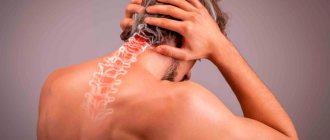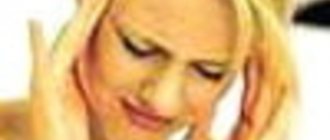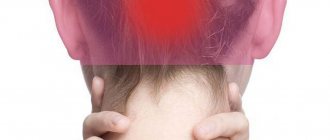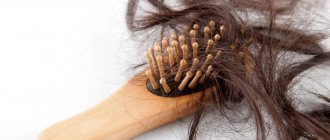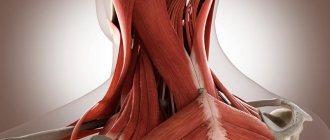Headaches vary in intensity and nature. Most often, this condition does not cause people to worry about their health - after all, everyone gets migraines from time to time. Everyone has had this condition at least once in their life. However, migraine does not bring any significant health consequences. The majority of the population thinks so. This is a mistake - some headache symptoms should alert the patient and cause a visit to a neurologist. Diagnostics is necessary to exclude the appearance of neoplasms. Point pain in the head in one place is a serious symptom that cannot be ignored.
Types of migraine and their causes
Migraine is a neurological disease. We talk about it if the patient complains of recurring headaches. They can be different in nature and intensity. Migraine can be either an independent illness or a symptom of a disease. In order to find out what disease caused the development of migraine, many diagnostic studies should be carried out. These are CT, MRI, checking the condition of the cervical spine, assessing the functioning of blood vessels, etc. If your head hurts in one point, this is also one of the manifestations of migraine.
Neurology identifies the following types of migraine:
- Classic (with aura). This type of migraine is characterized not only by a severe headache in the temples or forehead, but also by a so-called aura. It seems to the patient that he sees flickering on the left and right, but when he shifts his gaze, it turns out that there is nothing there. This effect is called “visual aura”, and all patients suffering from classic migraine are familiar with it.
- Regular migraine without aura usually occurs in people aged twenty years and older. The cause of this condition is often osteochondrosis of the cervical spine, pathologies of the cardiovascular system, and mental disorders. A typical migraine is not characterized by pinpoint pain in the head. It is encircling in nature. often the back of the head, the forehead, and the temples hurt at the same time. Or the temple on one side and the back of the head. The top of the head almost never hurts during a regular migraine.
- Ophthalmoplegic migraine is a condition in which the muscles of the visual organs cease to function completely or partially. As a result of this, double vision, ptosis or mydriasis are observed in the developing pain syndrome. This diagnosis is quite rare, and it is treated not only by a neurologist, but also by an ophthalmologist. If the patient notes that pain on the right side of the head (in rare cases, on the left) or in the forehead is accompanied by visual impairment, he may have ophthalmoplegic migraine.
- The retinal form of the disease is accompanied by the appearance of “blind” spots. The patient suffers from the appearance of black areas in the field of vision. This process is accompanied by shooting pain in the back of the head. in some cases, the pain may not be sharp, but aching. For an accurate diagnosis and effective treatment, the patient will have to undergo an MRI of the brain and an electroencephalogram. In some cases, diagnosis may require checking the condition of blood vessels.
- Complicated migraine is characterized not only by headache, but also by visual, auditory, and vestibular disorders. In some cases, an attack of this disease can provoke loss of consciousness. If the condition is complicated by seizures, the patient may have an epileptic seizure. To identify the exact cause of the disease, you should undergo an electroencephalogram and a number of other studies.
Why does the left side of my head hurt?
Physiological reasons
Under certain circumstances, pain in half the head can occur in a healthy person. Features of the pain syndrome are episodic in nature, rapid disappearance after rest or taking an analgesic. The symptom is observed in the following cases:
- Intense physical activity
. A combination with darkening of the eyes, dizziness, shortness of breath, palpitations and tingling in the heart area is possible. - Stressful situations
. The left or right half of the head hurts due to the release of stress hormones, causing vasoconstriction and increased blood pressure. There is pronounced emotional stress. - Mental fatigue
. Pain is caused by significant mental stress, as well as the need for prolonged concentration and tension when staying in one position, for example, when preparing for an exam or working at a computer. - Bad habits
. The symptom sometimes appears with the abuse of tonic drinks (coffee, strong tea, energy drinks), smoking and drinking alcohol. The cause is changes in vascular tone and the entry of toxic substances into the body.
Cluster headache
It develops in people of a certain type - it affects mainly tall men with an athletic build, ambitious but indecisive. The pain syndrome develops acutely, reaches a peak within a few minutes, lasts from 15 minutes to 3 hours. The pain most often occurs in the left side of the head. It is most strongly expressed in the orbit, burning, stabbing, unbearable, reminiscent of a “rupture” or “squeezing out” of the eye. Cluster headache is accompanied by autonomic disorders. It decreases with movement, so patients rush around and punch the wall.
Migraine
During a migraine, the left side of the head hurts somewhat less frequently than the right side. The pain is pressing, throbbing, with the epicenter in the temple, forehead or eye. Sometimes painful sensations arise in the back of the head, and from there spread to the entire half of the head. A typical sign of pathology is the periodic change of the affected side. Manifestations vary slightly depending on the type of migraine:
- Simple migraine.
Diagnosed in 80% of cases. There is no aura. A prodrome in the form of drowsiness, worsening mood, and decreased performance is possible. Hemicrania is combined with nausea and vomiting, and intensifies with movements and exposure to auditory and sound stimuli. Lasts from 4 hours to 2-3 days. - Migraine with aura.
The attack itself proceeds in the same way as with a simple migraine. The difference lies in the presence of an aura - visual disturbances, transient sensitivity disorders, ringing in the ears, the appearance of unusual smells or sounds, and deterioration of speech. Migraine in children is often preceded by “Alice syndrome” - visual distortion of objects, visual hallucinations. Lasts from several hours to 4 days. - Ocular migraine.
Typically there is loss of certain areas of the visual field, the presence of paracentral or central scotomas, and flickering before the eyes. The headache is throbbing, occurs in the forehead, moves to the orbit. The duration of visual disturbances is 10-20 minutes, the duration of an attack of cephalgia is 30-120 minutes. - Vestibular migraine.
Manifests with a prodrome, which is subsequently joined by dizziness, sometimes in combination with other variants of the aura. Then half of the patients develop pain in the left or right side of the head, lasting no more than 3 days. Dizziness stops with the onset of hemicrania, persists throughout the entire painful attack or becomes its only manifestation (painless paroxysms).
If the symptom persists for more than 3 days or a series of continuous paroxysms during this time, they speak of migraine status. The pain is very intense, wave-like. Pallor, adynamia, severe weakness, inability to take food and medications due to repeated vomiting, and increasing dehydration are observed. The condition is serious.
Pain in the left side of the head
Paroxysmal hemicrania
Unilateral pain is paroxysmal, very severe. It can be aching, pulsating, burning, boring, stabbing or reminiscent of a fist blow. It is localized mainly in the temple or orbit, less often in the area of the forehead, back of the head or crown of the head. Associated with damage to the trigeminal nerve. An attack of paroxysmal hemicrania lasts from 5 to 45 minutes; during the period of exacerbation, from 1 to 40 episodes can be observed per day. It is supplemented by vegetative symptoms, drooping eyelids, constriction of the pupil, and photophobia.
Vertebrobasilar insufficiency
Left-sided or right-sided headache is observed in the spondylogenic form of vertebrobasilar insufficiency. Develops suddenly with movement. From the neck and back of the head it spreads to the forehead, temple and eye socket, and radiates into the arm. A clear connection is revealed between the intensity of cephalalgia and the position of the cervical spine. The pain syndrome is complemented by unilateral hearing loss, noise in the ear, dizziness, visual disturbances, cerebellar disorders and autonomic reactions.
Hypnic headache
It is observed in people over 50 years of age and is chronic. It always develops during sleep, in 40% of cases it occurs only in the left or right half, in other cases it spreads to the entire head. An attack of hypnic headache forces the patient to wake up. On average, it lasts 30-60 minutes, repeats from once a week to several paroxysms throughout the night. The painful sensations are dull, moderately expressed, less often intense. Mild nausea and increased sensitivity to sounds and bright light may occur.
Cerebral tumors
Local pain in the left side of the head becomes an early symptom of tumors on the left side. Deep, bursting, quite intense, often occurring in the form of paroxysms. As neoplasia progresses, hemicrania is complemented by increasing focal symptoms. Then there are cerebral manifestations caused by edema and intracranial hypertension. The pain becomes diffuse, bilateral, accompanied by dizziness, nausea, and vomiting.
Arachnoiditis
The left half of the head may hurt with limited arachnoiditis, which developed in the long-term period after a head injury, inflammatory and infectious diseases. Symptoms increase gradually. The pain is bursting, more disturbing in the morning, combined with emotional instability, fatigue, irritability, and sleep disturbances. Subsequently, focal symptoms may develop, the process may spread with diffuse headaches and liquorodynamic crises.
Other reasons
Pain in the left side of the head is provoked by certain rheumatic and otolaryngological pathologies and diseases of the spine. The cause of the symptom is:
- Horton's disease.
The pain is one- or two-sided, dull, throbbing, with an epicenter in the temple area, intensifying at night, growing over several weeks. Fever, anorexia, myalgia, arthralgia, thickening and tenderness of the temporal and parietal arteries are noted. - Sinusitis.
Left-sided hemicrania accompanies unilateral frontal sinusitis and sinusitis with damage to the left paranasal sinus. Pulsating, bursting, localized in the eyebrow and forehead area, radiating to the temple. Complemented by general hyperthermia, intoxication, nasal discharge. - Mastoiditis.
Develops against the background of purulent otitis media. Accompanied by intense pain in the ear and behind the ear, which spreads to the crown, temple, orbit and upper jaw, sometimes covering the entire half of the head. Febrile temperature, intoxication, and profuse suppuration from the ear are observed. - Spine pathologies
. Unilateral compression of blood vessels and nerves due to osteochondrosis, protrusion, hernia and some other diseases of the cervical spine causes pain in the left half of the head. It is accompanied by pain in the neck, and sometimes by numbness and weakness of the upper limb.
Point headache
A piercing headache that suddenly appears at one point is an extremely dangerous syndrome. This condition, depending on the frequency of occurrence and intensity of the sensation, may indicate the following diagnoses:
- vegetative-vascular dystonia;
- neoplasms of a benign or malignant nature;
- intracranial pressure;
- surges in blood pressure (hypertension or essential hypertension);
- osteochondrosis of the cervical spine.
These are the main reasons why a headache occurs at one point. The more often discomfort and pain occur, the more likely it is that the patient is dealing with a serious illness.
Diagnostics
A neurologist is involved in determining the nature of the disease that provokes pain in the left half of the head. According to indications, a rheumatologist, oncologist, and otolaryngologist are involved. Primary cephalgia (migraine, cluster and hypnic headache, paroxysmal hemicrania) are diagnosed based on clinical symptoms, auxiliary methods are prescribed to exclude organic pathology.
In other cases, when establishing a diagnosis, they rely on both objective data and the results of imaging and laboratory techniques. The examination program includes the following procedures:
- Echoencephalography.
It is produced to measure intracranial pressure and helps to exclude conditions accompanied by intracranial hypertension. Despite the possibility of detecting volumetric processes, in the early stages of tumors it may not be informative due to the small size of the formations. - Assessment of cerebral blood flow
. Includes duplex scanning, ultrasound examination of the vessels of the head and neck. As part of differential diagnosis, it allows you to detect hemodynamic disorders characteristic of atherosclerosis and other diseases. Recommended for patients with vertebrobasilar insufficiency to clarify the nature and structure of the stenosis. - Radiography
. Standard photographs of the cervical spine reveal signs of hernia, osteochondrosis and other diseases of the spinal column. To confirm extravasal compression of the vertebral artery, radiographs with functional tests are taken. For sinusitis, an X-ray of the paranasal sinuses is performed, and for mastoiditis, an X-ray of the temporal bone is performed. - Tomography
. MRI of the brain is prescribed for suspected tumors and arachnoiditis. In angiography mode, it provides comprehensive information about the condition of the main arteries. If a vertebrogenic etiology of pain is suspected, MRI and CT of the cervical spine are performed. For sinusitis, an MRI of the sinuses is sometimes performed.
Consultation with a neurologist
Feelings experienced by the patient
Before consulting a neurologist, the patient should listen to himself so that during the appointment he can describe as accurately as possible exactly how his head hurts at one point. Feelings may be as follows:
- Sharp and sudden pain, reminiscent of a puncture with a sharp needle.
- Localization of the problem: headache in one point - on the top of the head, in the back of the head or in another place.
- The vision becomes dark when an attack occurs, or perhaps the patient lost consciousness during an exacerbation of a migraine.
- During an attack, the patient observes any shadows, flickering on the left or right, darkening of some areas in the field of vision.
It will also be necessary to clarify how long the attacks last - a few seconds or minutes? The more detailed the patient describes the symptoms to the neurologist, the easier it will be to draw up a clinical picture for prescribing appropriate treatment.
Treatment
When a headache occurs at one point, most people prefer to take a tablet of a potent analgesic. This approach is fundamentally wrong: the attack of pain will return again and again. Stopping it every time with pills is wrong. It is better to undergo a full diagnosis once, find out the cause of the pain and take a course of medications that will cure the cause of the disease and prevent recurrent pain.
- If the cause lies in impaired cerebral circulation, taking nootropics and vasodilators will help. “Cinnarizine” has proven itself to be excellent, which, although it belongs to the old generation of drugs, is still actively used in modern neurology and psychiatry. This drug is cheap, and within the first week of use it can have a significant vasodilating effect, which will contribute to the complete disappearance of migraines of any etiology, regardless of the location of the pain - on the right side of the head, the back of the head, the crown.
- If a patient is diagnosed with cervical osteochondrosis, headache is not uncommon. His forehead often hurts, and there are point pains in the temples and crown. In this case, it is useless to simply relieve the pain - you need to treat osteochondrosis first. The course of intramuscular injections of “Kombilipen” and “Milgamma” must be repeated every three months. A therapeutic massage of the cervical-collar area is necessary. Moderate exercise therapy will also be beneficial. In no case should the patient overexert himself or lift more than five kilograms, or engage in weightlifting or traumatic sports.
- Point cephalalgia in the head area is often one of the manifestations of vegetative-vascular dystonia. In this case, taking vasodilators and sedatives will help. You can often get by with taking sedative infusions. For example, “Fitosedan” has a fairly powerful sedative effect. You can also use nootropics. In some cases, the doctor may prescribe drugs that have a mild tranquilizing effect - for example, Afobazol.
What does a woman wear twice a year and hit her head on at the dacha?
The full text of this problem can be in different versions, personally, I like the version with prison the most, when a man served 5 years because he could not remember the last word, so here is the philological riddle itself with criminal overtones (why was the man imprisoned? )
They imprisoned a man for 25 years (most likely the court decided so, well, they couldn’t imprison him for the sake of a riddle) and the head of the prison gave him an assignment: - Tell me 5 words that end in “-tso”, and for each word I will cut your sentence by 5 years. Arriving at the dining room, the man ate an egg, immediately ran to the boss and told him this word yay tso . His boss cut off 5 years of his sentence, leaving 20 years left. While washing his face in the morning, the man looked in the mirror and understood one more word, seeing the reflection there, whether this was the Central Election Commission . I ran joyfully to the boss and another minus 5 years, 15 left. While going out for a walk, he passed by the wing of the central heating center , and another 5 years were cut off, the man was happy, 10 years remained. In the evening, the prisoners went to play basketball, the man raised his head when he was throwing the ball and saw the CO . And he was happy again, two days in prison, and he had already thrown off 20 years from his sentence, 5 remained, the man was already free in his thoughts, that there was only one word left to find. The man thought about the fifth word and became sad; without being able to guess, he served the remaining 5 years. He was released, came home, opened the door of the house, and there his wife met him and the man understood the last word.
What words end in -tso?
So there are four words that end in -tso egg, face, porch and ring , and can you guess the fifth?
There are two tips:
- This is what a woman puts on 2 times a year.
- He hits his head on it at the dacha.
The last word (fifth) in -tso variants
There are many words ending in -tso, these are words such as.
3 letter word:
Atso is the name of the Macedonian poet Shopov
4 letter words (there was already a face and an egg):
Gozo - an island in the Mediterranean Sea Katso - an address to a man in Georgia Enzo - the name of the Italian designer Ferrari
5 letter words:
Berzo - drumstick (Russian, but does not fit the description) Vinzo - drink (not that, it's a diminutive) Donzo - a board on which a spinner sits, sticking a tow into it (no) Lazzo - gesticulation of an Italian comedian Mezzo - soprano, voice Morzo - a lake formed by the expansion of branches at the mouth of the river Myastso - diminutive for meat Namzo - a lake in Asia Pozzo - Italian painter and architect Rizzo - mayor of Philadelphia Tozzo - tall hat (Italian)
6 letter words (there was already a ring):
Arezzo - a city in Italy Balzo - a turban-shaped hat in Italy in the 15th-16th centuries. (very similar to the answer, but the word is not Russian) Guazzo - Italian writer Dryantso - diminutive of rubbish Isonzo - a river in Italy, Yugoslavia Lake - the same as lake Rienzo - friend of Petrarch, who headed the republic in Rome Scherzo - Italian medieval ditties
7 letter words (there was already a porch):
Beletso - diminutive of linen Gnil'tso - diminutive of rot and decay Gumentso - analogous to tonsure in the Russian tradition Chisel - small chisel Dupletso - diminutive of hollow Wheel - part of the lifting mechanism of a crossbow, on which the bowstring is wound when pulling Spear - a rarely used term denoting the tip arrows. Lorenzo - a magnificent representative of the glorious Medici family Marezzo - a type of artificial marble Palazzo - a palace, a mansion, especially in relation to Italian architecture Tadebzo - in Samoyed mythology (among the Nenets) - the spirit assistants of the shaman Schifazzo - a small sailing ship
8 letter words
Bragozzo - a fishing boat in Venice Paltezzo - diminutive of a coat Pismetso - diminutive of a letter
9 letter words:
Burigozzo - coin, Milanese testone, 32 solidi, 16th century. Flush - peephole in the door (both sides) Michelozzo - Italian architect and sculptor
10 letter words:
Intermezzo - an independent musical play Mantegazzo - Italian writer
In the end, what is the answer to the riddle?
Of the above words, not a single one fits the description (hint) since it is either foreign or cannot be worn on the head. But people on the Internet didn’t stop there and began to come up with their own options, some of them quite interesting.
Cluster headache: symptoms
A rarer and more complex manifestation of point headache is cluster cephalgia. Doctors also call it cluster, histamine or Horton’s, depending on the location and nature of the pain. It manifests itself in the following symptoms:
- pain in the temporal artery during the next attack;
- discomfort and pain only on one side (not always), in the temple area;
- cephalalgia can develop at night - and often the patient is forced to wake up from the intensity of the painful sensations;
- the duration of the attack varies - most often it is five to six minutes, but in rare cases it can last for hours before taking the anesthetic;
- swelling of the nasopharynx and lacrimation;
- constriction of the pupils.
A harbinger of serious illness
Cluster cephalgia, in which the patient constantly experiences pinpoint throbbing pain in the right side of the head, may indicate the development of the following diseases and conditions:
- brain tumors of various origins;
- withdrawal state;
- aneurysms;
- hematomas due to traumatic brain injuries and concussions;
- poisoning with certain drugs;
- taking vasodilators (for example, nitroglycerin) or histamine.
Therapy for cluster headaches
Drug treatment may be prescribed by a neurologist after receiving the research results. For an accurate diagnosis, it is often necessary to undergo an MRI of the brain and electroencephalography. If the exact cause of beam cephalgia is not known, until the exact diagnosis is determined, the pain can be relieved with the following medications:
- Ketorol is a powerful prescription pain reliever that relieves even the most severe pain ten to fifteen minutes after administration.
- "Moment". The active ingredient of the drug is ibuprofen. It is a fast-acting, effective anti-inflammatory and analgesic medicine. Sold at any pharmacy without a prescription.
- "Citramon" is the most popular and cheapest analgesic, which also contains caffeine. Gives vigor and has a stimulating effect.
With a sharp point pain in the head, most people prefer to take a tablet of a potent analgesic. This approach is questionable: the attack of pain will return, and more than once. Stopping it every time with pills is wrong. It is better to undergo a full diagnosis once, find out the cause of the pain and take a course of medications that will eliminate the cause of the disease and prevent recurrence of pain.
Methods for diagnosing pain in the left hemisphere
To determine why the left side of your head hurts, you will need a full examination. Neurologists diagnose diseases that can lead to this symptom. According to their recommendations, a number of examinations are carried out, the results of which can be informative in determining the cause of the headache and making a diagnosis:
- collecting medical history data - it is important for the doctor to know about the conditions for the occurrence of headaches, its nature and strength, as well as the patient’s lifestyle and habits, old injuries and diseases;
- Ultrasound examination of cerebral vessels (Dopplerography) is a method by which you can evaluate the speed of blood flow and the degree of filling of blood vessels;
- encephalography is a technique that allows you to examine the functional activity of the brain;
- MRI is one of the main diagnostic methods, more often used to identify tumors, but it is also informative for other pathologies.
At the Clinical Brain Institute you can undergo a full examination and determine the cause of your headache. The test results will show a complete clinical picture, on the basis of which it will be possible to select an individual treatment and prevention regimen.
Which doctor treats migraines?
In order to permanently get rid of attacks of cluster cephalgia or point migraine, to find out why the back of the head hurts, you should undergo a full examination. By influencing the source of the problem, long-term remission can be achieved. You can make an appointment with a paid neurologist. But then all the research will be paid. As a result, the total amount that the patient will have to spend to find out the cause of the pain will be at least twenty thousand rubles (you will need to pay for an MRI of the brain, an electroencephalogram, and a decoding of the result).
You can go a different route and not spend a penny on diagnostics. But this will take more time. The patient must take his medical insurance card and go to the district clinic, where he will be given a coupon for an appointment with a local physician. He, in turn, will issue a coupon for a consultation with a neurologist. Already there, after all the complaints have been stated, further treatment will be prescribed and a referral for the necessary research will be issued.
Diagnostic methods
It is important to determine why your head hurts on one side. For this, the overall picture and clinical signs may not be enough. The doctor will prescribe additional examinations to assess the condition of the spine and soft tissues, nerves and blood vessels:
- general and biochemical blood tests;
- MRI of the cervical spine, in some cases radiography is sufficient;
- Dopplerography of the vessels of the neck and head - ultrasound diagnostics using a contrast agent;
- otolaryngological examinations - include visualization of the paranasal sinuses, diagnosis of inflammatory diseases of the ear.
At the Clinical Brain Institute, you can undergo a full examination and determine the exact cause of your headache. Without a series of tests, it is possible to carry out exclusively symptomatic treatment, which does not affect the cause of the pain, but only eliminates its symptoms.
The relationship and difference between point pain and regular migraine
Point cephalalgia is often a component of other types of headaches:
- “Tension pain” is a concept in neurology that arose a long time ago and is still relevant today. It occurs in both men and women due to severe nervous and physical fatigue. It is expressed not only in point cephalgia, but also in the fact that the forehead and back of the head hurt (the localization and nature of the pain changes on average once an hour). At the same time, the patient feels nausea, dizziness, and may lose consciousness. A good night's sleep is often enough to stop these symptoms. If the patient is unable to fall asleep on his own, he should resort to taking a sleeping pill.
- Histamine pain. In 40% of cases it is associated with pain of a primary nature. One type of migraine can act as a harbinger of another and change the patient’s condition. For example, the condition begins as a migraine with aura, and after an hour it develops into an ophthalmoplegic form.
- Cranialgia is a condition that occurs when the trigeminal nerve becomes inflamed. This is a common reason why the back and top of the head hurt. Cranialgia is characterized by lumbago in the form of short-term impulses. Most often, this condition does not require any special treatment and goes away after the inflammatory process of the trigeminal nerve stops.
Indications for trigger point blockade for myofascial pain syndrome
The disease is characterized by the gradual development of pain symptoms. At first, pain occurs only after exercise, and then persists even at rest. Very often, painful sensations are distant, localized not in the triggers themselves, but in areas of the body associated with the affected area.
Kazieva Aminat Ziyavovna
Neurologist
Rostov State Medical University
Experience since 2012
Although the disease is not life-threatening, it affects the physical condition. Chronic pain exhausts the patient not only physically, but also emotionally. It is important to seek qualified neurological help while the condition is not yet critical.
Trigger point blockade for myofascial syndrome is required in the following cases:
- chronic pain in the body, often in the back, the cause of which is unknown;
- acute pain syndrome, which is accompanied by limited mobility;
- neck pain, headache, dizziness, blurred vision, tinnitus that occurs with cervical myofascial syndrome;
- chest pain, feeling of lack of air, rapid heartbeat, as manifestations of the formation of trigger points in the pectoral muscle.
Symptoms depend on the affected area. In addition to pain, autonomic disorders are not uncommon. A neurologist will help identify the true cause of the pain syndrome and prescribe only the necessary additional examination.
Note! Doctors warn that chronic pain in any part of the body that worsens well-being should be a reason to go to the clinic.
Advice from neurologists: how to avoid the development of cluster and point pain
A list of simple recommendations that will help prevent the development of migraines of any etiology and diseases that provoke them:
- You need to sleep at least eight hours every night. no matter what problems the patient may be experiencing, no matter what stress he may be experiencing, a good night’s sleep should be a must.
- Good nutrition is the basis of a healthy nervous system. Under no circumstances should you adhere to strict diets and starve yourself - even if the consequences do not appear immediately, they will come over time (the nervous system exhausted by fasting does not forgive such an attitude).
- A sufficient amount of amino acids, vitamins and microelements in the diet.
- The correct reaction to stress is to remain calm in any situation, so that later you don’t think about why your head hurts (the back of your head, the crown or your forehead).
- Moderate physical education - do not exhaust yourself with exercises, do not provoke overwork.
